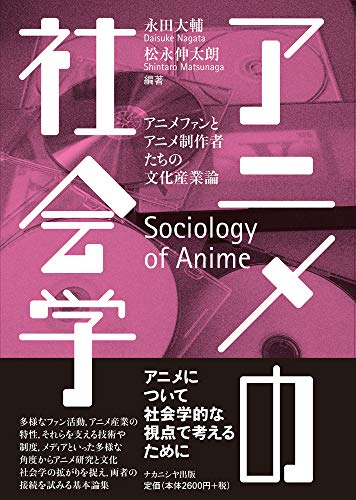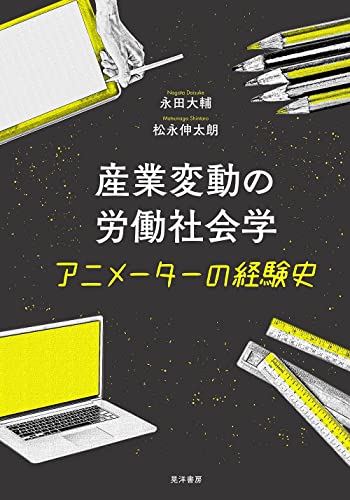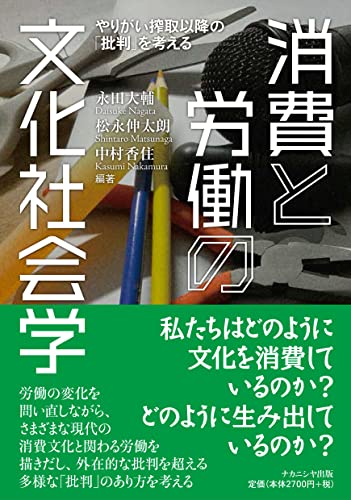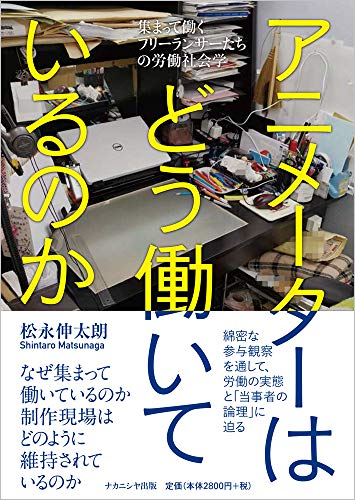- 著者
- 松永 伸太朗 永田 大輔
- 出版者
- 日本社会学会
- 雑誌
- 社会学評論 (ISSN:00215414)
- 巻号頁・発行日
- vol.71, no.3, pp.358-376, 2020 (Released:2021-12-31)
- 参考文献数
- 16
芸能などの芸術産業に比して,労働集約性が高く熟練した制作人口を大規模に必要とするアニメ産業では,制作者の定着への志向がいかに維持されるかが課題となる.定着が維持されるためには,制作者が仕事を獲得し続けられる見通しをもてることが必要である.アニメ産業ではプロジェクトベースの契約が主流である制作者を,労務管理側が評価することが難しいため,制作者同士の相互評価が産業への定着志向を持ち続けるうえで重要になる.本稿ではアニメ産業の制作者同士の相互評価が機能しうる場としてのインフォーマルなコミュニティを支える構造的条件とその限界について,アニメーターへの2つのインタビュー調査に基づいて検討した. 近年の技術革新に伴い現場の管理側が若手中心になり,管理側からのアニメーターへの評価がさらに難しくなり,アニメーター同士の相互評価の重要性は増していた.ベテランはインフォーマルな相互評価を行っていることを語っていたが,若手は自らが適切に「評価されていない」という感覚をもっており,コミュニティの衰退が示唆されていた.このような差異を導く原因として,分業による評価の曖昧化と,放映期間の短期化によるコミュニケーション機会の減少があった. 産業への定着志向が維持されるためにはインフォーマルなコミュニティが必要である.本稿はそのコミュニティがどのように揺らいでいるかの構造的条件の解明の重要性を指摘した.
29 0 0 0 OA ベテランアニメーターの技術への理解とキャリア —熟練・準拠集団・産業変動—
- 著者
- 松永 伸太朗 永田 大輔
- 出版者
- 日本労働社会学会
- 雑誌
- 労働社会学研究 (ISSN:13457357)
- 巻号頁・発行日
- vol.22, pp.1-23, 2021 (Released:2022-04-01)
- 参考文献数
- 20
This article reveals how veteran animators in the Japanese animation industry understand the technologies introduced recently regarding their occupational careers. The animation industry in Japan has promoted the digitalization of the picture drawing process. However, previous research has not mentioned how workers built their careers to introduce new technologies while working in the creative industries with precarious work conditions. Management studies on the technology introduction fail to grasp the diversity of animatorsʼ understandings. Even sociological research has not paid attention to the occupation like animators, in which workers donʼt have the rigid objection in their careers, such as becoming independent self-employment.Based on the interview research on the animators who started their working life in the 1980 s, one of the most significant transformation periods of the animation industry, this article clarifies the narratives of technology introductions. Animators who worked at only a few firms donʼt see the technology introductions as they should deal with.On the contrary, animators who worked at many studios interpret the technology introductions as directly affecting their career formations. Among such animators, this article compares two animatorsʼ narratives concerning turning points in careers, reference groups in the occupation, and the stance for digitalization. This analysis revealed the two has quite different understanding on new technology and artfully deal with the digitalization in their careers. Moreover, the difference in coping practice stems from the difference in the working process, skills and reference groups.In the light of these findings, this article pointed out that the introduction of technology should also be promoted progressively, taking into account the logic of the workersʼ side.
22 0 0 0 OA 多様な表現を可能にする制作者の労働規範の変容 1970~80 年代のアニメ産業を事例として
- 著者
- 永田 大輔 松永 伸太朗
- 出版者
- 日本メディア学会
- 雑誌
- マス・コミュニケーション研究 (ISSN:13411306)
- 巻号頁・発行日
- vol.95, pp.183-201, 2019-07-31 (Released:2019-10-25)
- 参考文献数
- 16
In the 1970s and 1980s, the animation industry in Japan saw the emergenceof distinctive consumers, called “anime fans.” This brought quantitative andqualitative changes in products in the animation market. The aim of this paperis to reveal how animators dealt with this change and how they reformed theirworking culture. The authors have shown that the working culture underpinnedmarket movements in the 1970s and 1980s. Historically, animators preferred working as freelancers on a piece-ratesystem rather than as regular workers on a fixed salary. This was due to theirmeritocratic occupational norm. However, the number of animation programsincreased during the anime-boom period, and animators were forced to cooperatewith a much broader workforce to produce many programs suitable for thediverse demands of fans. This limited animators’ discretion. In this study, theauthors wanted to understand how it was possible for the animation industry tocontinue supplying the workforce necessary to adapt to market changes duringthis time. For this purpose, the authors analyzed texts in animation magazines fromthe perspective of the labor process theory, which explains the relationshipbetween workstyles and the transformation of markets. One of the key conceptsof this approach is workers’ shared norms. The authors also employedethnomethodology, which elicits vivid insights regarding such norms, to analyzeround-table talks and interviews with animators working at animation magazines. While animators understood the quantitative expansion of the animationmarket as limiting their discretion, there was a disparity in how they copedwith the situation. The older generation recognized their skills in detail andrelied on networks built by longtime co-working. The younger generationaccepted the new situation and found their occupational value in the new workingenvironment through the occupational image of “the artisan.” This imagereflected the new occupational competence and made the formation of peercommunities of young animators possible. This industrial transformation sustainedthe supply of a broad workforce, which drew on various expressions duringthe anime-boom period.
- 著者
- 松永 伸太朗
- 出版者
- 日本労働社会学会
- 雑誌
- 労働社会学研究 (ISSN:13457357)
- 巻号頁・発行日
- vol.17, pp.1-25, 2016
<p>The aim of this paper is to reveal why animators working in Japan don't regard their low-paid and long-time work as problems. Previous studies haven't theoretically considered animators'labor process. Instead, this paper revealed relations between their occupational norms and their logic of acceptance of bad work conditions with ethnomethodological analysis of interviews.</p><p>The conclusion of this paper is as follows: Firstly, there are two types of norms in animators'workplace. One is"artisan"norm, which means that animators should follow instructions of upstream workers, the other is"creator"norm, which means that animators should show their originality. Artisan norm is superior to creator norm. Secondly, understanding and using skillfully these norms is a kind of requirement to be a competent animator. Thirdly, both norms have a common feature, which means that animators should have high-level techniques. Sustained by this common feature, animators compete for higher skills. However, their competition has been intensified because there are many cases that high skill workers can't earn appropriate wages by some institutional factors. As a result, animators who earn wages to manage to make their living become relative winners. However low-paid their labors are, animators who can make their living are winners, and so they don't tend to regard their work condition as problems.</p>
14 0 0 0 アニメの社会学 : アニメファンとアニメ制作者たちの文化産業論
- 著者
- 永田大輔 松永伸太朗編著
- 出版者
- ナカニシヤ出版
- 巻号頁・発行日
- 2020
10 0 0 0 OA アニメーターの過重労働・低賃金と職業規範
- 著者
- 松永 伸太朗
- 出版者
- 日本労働社会学会
- 雑誌
- 労働社会学研究 (ISSN:13457357)
- 巻号頁・発行日
- vol.17, pp.1-25, 2016 (Released:2017-09-01)
- 参考文献数
- 34
- 被引用文献数
- 1
The aim of this paper is to reveal why animators working in Japan don’t regard their low-paid and long-time work as problems. Previous studies haven’t theoretically considered animators’labor process. Instead, this paper revealed relations between their occupational norms and their logic of acceptance of bad work conditions with ethnomethodological analysis of interviews.The conclusion of this paper is as follows: Firstly, there are two types of norms in animators’workplace. One is“artisan”norm, which means that animators should follow instructions of upstream workers, the other is“creator”norm, which means that animators should show their originality. Artisan norm is superior to creator norm. Secondly, understanding and using skillfully these norms is a kind of requirement to be a competent animator. Thirdly, both norms have a common feature, which means that animators should have high-level techniques. Sustained by this common feature, animators compete for higher skills. However, their competition has been intensified because there are many cases that high skill workers can’t earn appropriate wages by some institutional factors. As a result, animators who earn wages to manage to make their living become relative winners. However low-paid their labors are, animators who can make their living are winners, and so they don’t tend to regard their work condition as problems.
10 0 0 0 IR 公共社会学における経験的研究に関する試論 マイケル・ブラウォイの「拡張事例研究法」に着目して
- 著者
- 松永 伸太朗
- 出版者
- 長野大学
- 雑誌
- 長野大学紀要 = BULLETIN OF NAGANO UNIVERSITY (ISSN:02875438)
- 巻号頁・発行日
- vol.42, no.1, pp.137-143, 2020-07-31
10 0 0 0 OA 公共社会学における経験的研究に関する試論 マイケル・ブラウォイの「拡張事例研究法」に着目して
- 著者
- 松永 伸太朗
- 出版者
- 長野大学
- 雑誌
- 長野大学紀要 = BULLETIN OF NAGANO UNIVERSITY (ISSN:02875438)
- 巻号頁・発行日
- vol.42, no.1, pp.137-143, 2020-07-31
9 0 0 0 OA アニメ制作者にとって「実力」とは何か ――「浮動する規範」と準拠集団――
- 著者
- 松永 伸太朗 永田 大輔
- 出版者
- 社会政策学会
- 雑誌
- 社会政策 (ISSN:18831850)
- 巻号頁・発行日
- vol.13, no.2, pp.89-101, 2021-11-10 (Released:2023-11-10)
- 参考文献数
- 16
アニメ産業において制作者が用いるスキルは客観的な形式で表現されないが,同業者内では理解可能な形で共有されているという特徴を有する。本稿では,評価の基準が変わりながらその都度の状況に適切な判断がなされることを意味する「浮動する規範」という考え方に依拠しながら,アニメ制作者の語りに基づいて彼らが理解する実力の内実を明らかにした。その結果,同じ監督層であっても,工程全体を見渡すことを経験した制作進行や撮影職出身者と,作画や映像表現に特化したアニメーター出身者では準拠集団が異なっており,それによって異なる技能観を有していることが明らかになった。さらに,アニメーター同士のスキルはそれぞれ自らを他者から差異化することに形式として理解可能なものとなっていた。こうした知見に基づき,客観化されず関係性に基づくスキルであっても,OJTを通したスキル形成が重要性を持つことを示唆した。
7 0 0 0 OA ポスト工業社会における労働者の共同性と個人契機の記述 河西宏祐の「労働者文化」論の可能性
- 著者
- 松永 伸太朗 永田 大輔
- 出版者
- 日本労働社会学会
- 雑誌
- 日本労働社会学会年報 (ISSN:09197990)
- 巻号頁・発行日
- vol.30, pp.89-113, 2019 (Released:2021-05-14)
- 参考文献数
- 39
- 著者
- 松永 伸太朗 永田 大輔
- 出版者
- 日本オーラル・ヒストリー学会
- 雑誌
- 日本オーラル・ヒストリー研究 = Japan oral history review (ISSN:18823033)
- 巻号頁・発行日
- vol.13, pp.129-150, 2017
5 0 0 0 産業変動の労働社会学 : アニメーターの経験史
- 著者
- 永田大輔 松永伸太朗著
- 出版者
- 晃洋書房
- 巻号頁・発行日
- 2022
- 著者
- 松永 伸太朗 永田 大輔
- 出版者
- 日本社会学会 ; 1950-
- 雑誌
- 社会学評論 = Japanese sociological review (ISSN:00215414)
- 巻号頁・発行日
- vol.71, no.3, pp.358-376, 2020
4 0 0 0 OA 作画用紙上での協働とインストラクション――アニメーターの労働過程にかんする一考察――
- 著者
- 松永 伸太朗
- 出版者
- 関東社会学会
- 雑誌
- 年報社会学論集 (ISSN:09194363)
- 巻号頁・発行日
- vol.2020, no.33, pp.6-13, 2020-07-31 (Released:2021-08-24)
- 参考文献数
- 12
In the animation industry, a lot of creators, who have various specialties, cooperate to make up products. In particular, animators often do it although they don’t work in the same place and time. This paper addresses how they accomplish such cooperation without co-presense from the analysis of their work of drawing. The pictures which a sub-key animator drew in her labor process contain instructions for the animators in the subsequent process. These prevent them from a misunderstanding of the upper-process animators’ directions. In the same vein, she added drawing papers to make instructions without any rewards. These observations imply that animators orient to generate smooth cooperation, and we should understand the labor problems of animators from their systems of cooperation.
4 0 0 0 消費と労働の文化社会学 : やりがい搾取以降の「批判」を考える
- 著者
- 永田大輔 松永伸太朗 中村香住編著
- 出版者
- ナカニシヤ出版
- 巻号頁・発行日
- 2023
- 著者
- 松永 伸太朗
- 出版者
- 長野大学
- 雑誌
- 長野大学紀要 = BULLETIN OF NAGANO UNIVERSITY (ISSN:02875438)
- 巻号頁・発行日
- vol.44, no.3, pp.123-132, 2023-03-31
- 著者
- 松永 伸太朗
- 出版者
- 長野大学
- 雑誌
- 長野大学紀要 = BULLETIN OF NAGANO UNIVERSITY (ISSN:02875438)
- 巻号頁・発行日
- vol.43, no.2, pp.77-78, 2021-11-30
- 著者
- 松永 伸太朗
- 出版者
- 長野大学
- 雑誌
- 長野大学紀要 = BULLETIN OF NAGANO UNIVERSITY (ISSN:02875438)
- 巻号頁・発行日
- vol.43, no.1, pp.27-36, 2021-07-31
1 0 0 0 OA アニメ産業における制作者のキャリアとジェンダーに関する質的研究
- 著者
- 松永 伸太朗 永田 大輔
- 出版者
- 長野大学
- 雑誌
- 長野大学紀要 = BULLETIN OF NAGANO UNIVERSITY (ISSN:02875438)
- 巻号頁・発行日
- vol.42, no.2, pp.71-72, 2020-11-30



